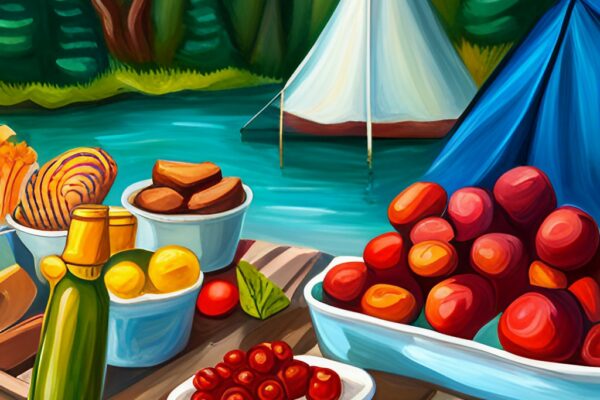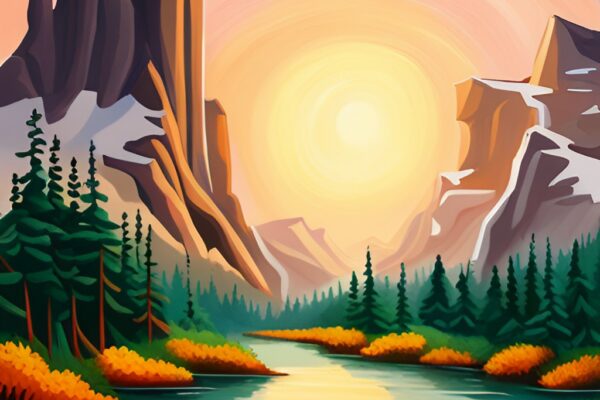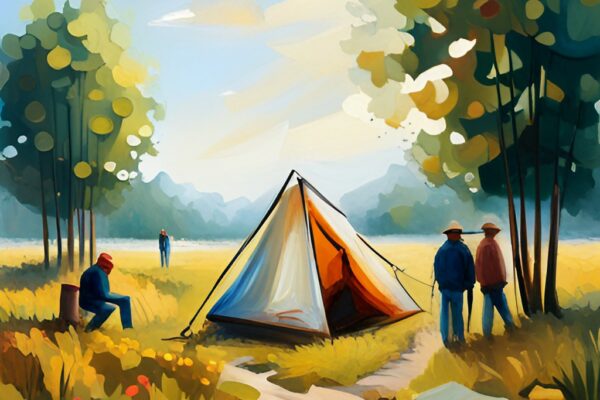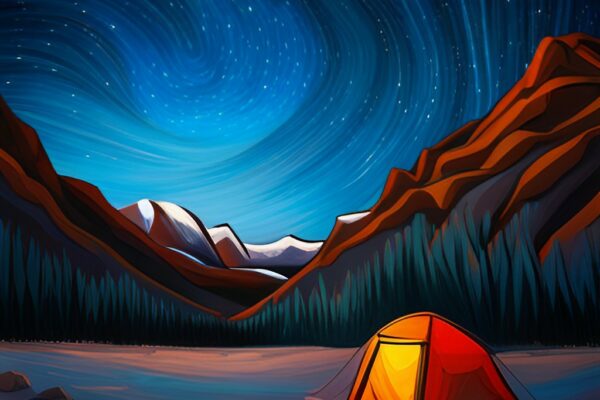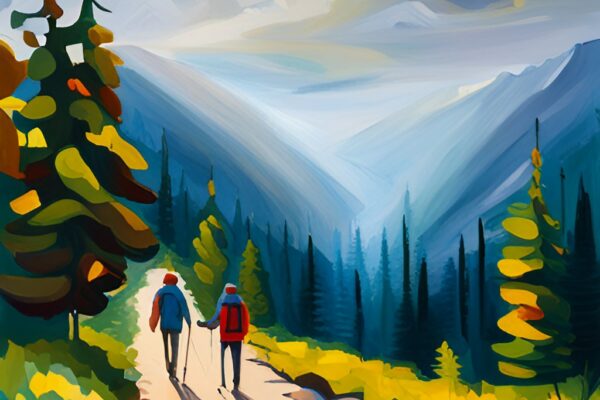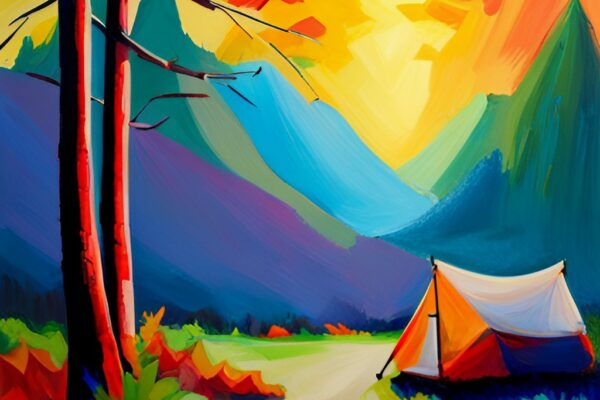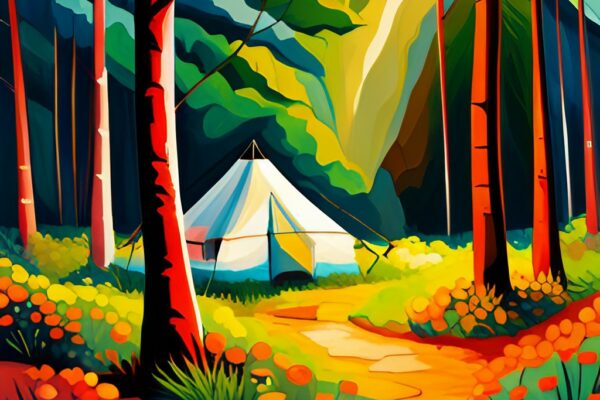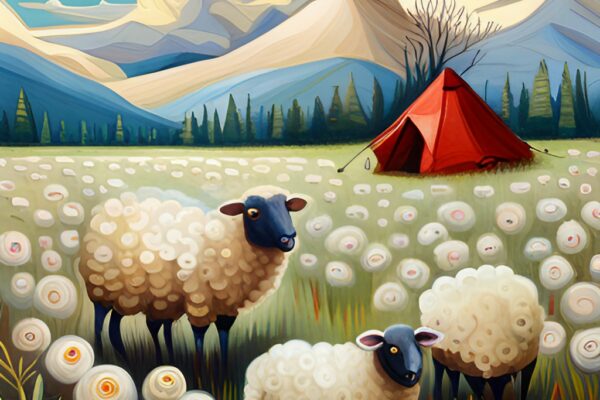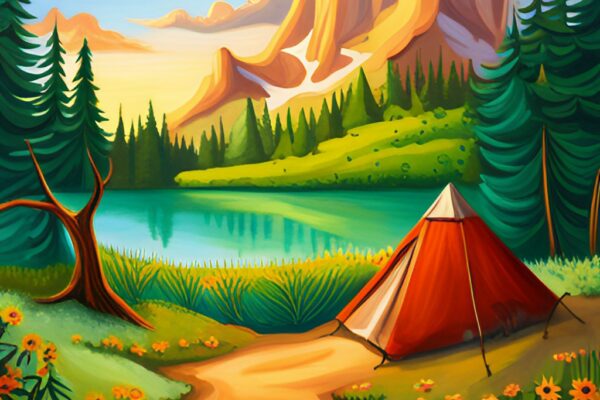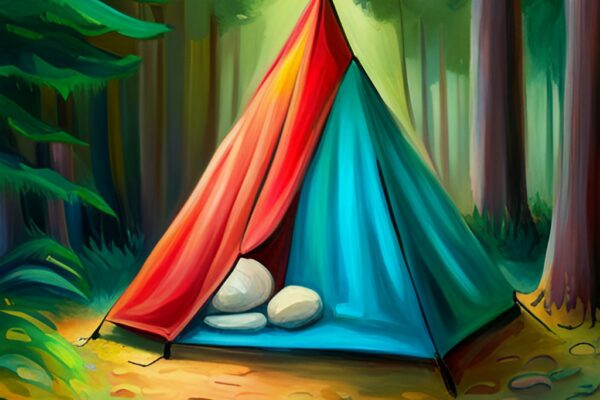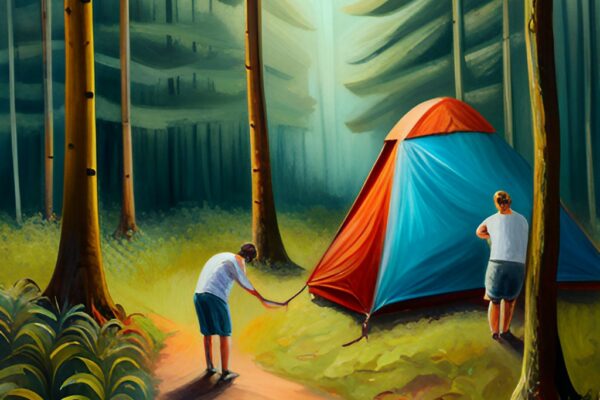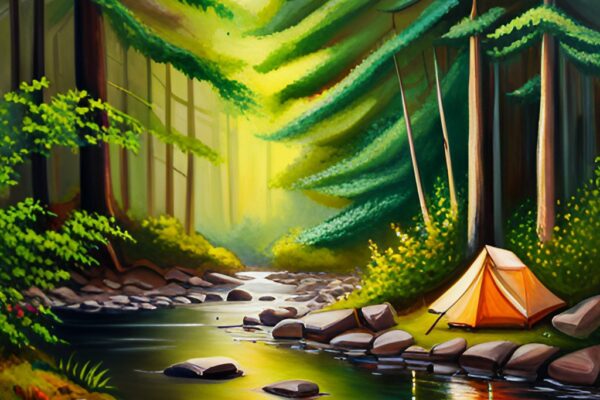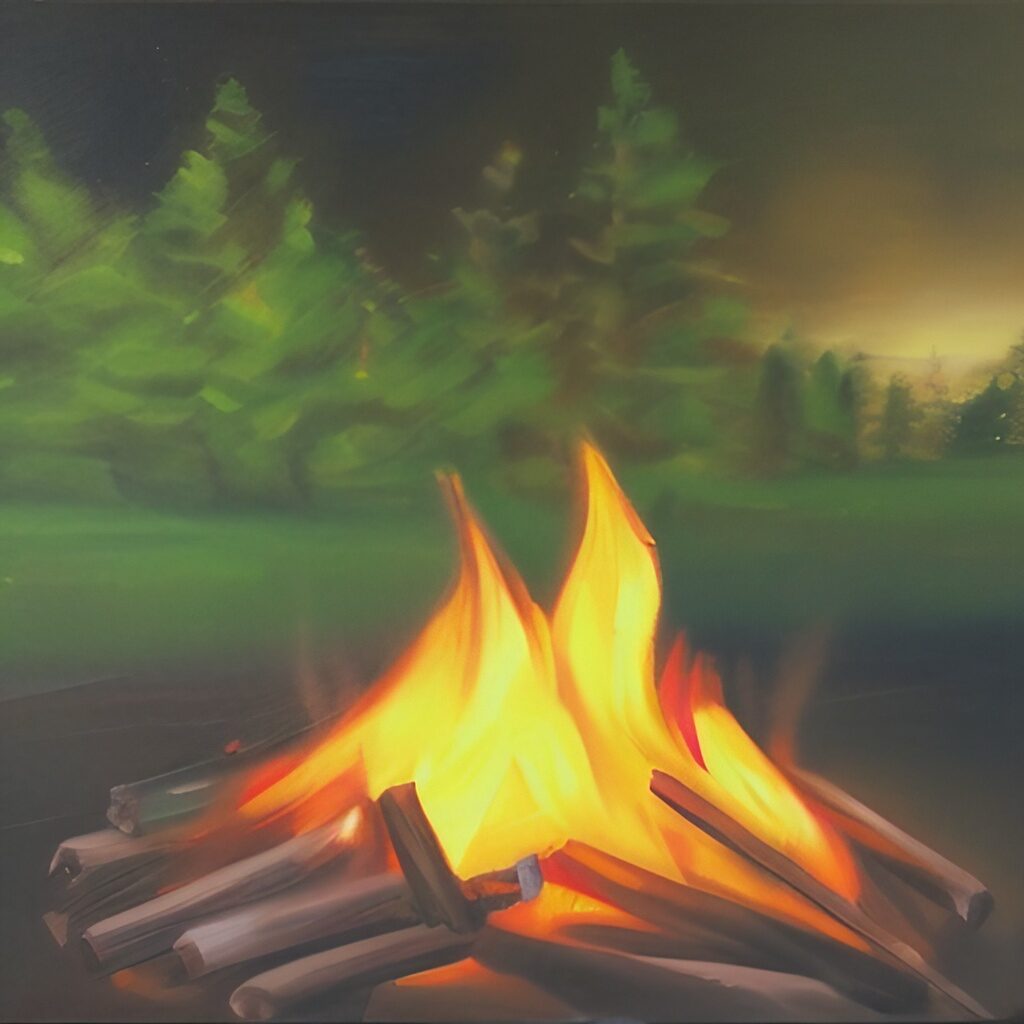
A good campfire can really make or break a camping trip. It provides warmth, entertainment, and a great way to cook! However, sometimes you just can’t get it to stay lit.
Common reasons your campfire goes out include lack of airflow, lack of heat, cold or wet wood, or your wood being the wrong size. Try to bring dry wood on your trip, and don’t leave it sitting out in the cold for too long before starting your fire.
Thankfully, there are simple solutions to all of your campfire issues. Here are a few:
- Building a teepee-style fire.
- Keep your wood close to the heat source.
- Wrap your wood up before using it.
- Use dry wood.
- Use small pieces.
- Avoid humid areas.
- Use hardwood, ideally oak.
- Why Does My Campfire Keep Going Out? – Why your campfire keeps going out
- There’s Not Enough Airflow – Why Your Campfire Keeps Going Out
- It’s Not Hot Enough – Why Your Campfire Keeps Going Out
- It’s Too Cold For Your Wood – Why Your Campfire Keeps Going Out
- The Wood Is Too Wet – Why Your Campfire Keeps Going Out
- The Wood Is The Wrong Size – Why Your Campfire Keeps Going Out
- It’s Too Humid – Why Your Campfire Keeps Going Out
- You Are Not Using the Best Type of Wood – Why Your Campfire Keeps Going Out
- How Do You Keep a Campfire From Going Out? – Why your campfire keeps going out
- Conclusion – Why your campfire keeps going out
- Frequently Asked Questions – Why Your Campfire Keeps Going Out
Why Does My Campfire Keep Going Out? – Why your campfire keeps going out
You’re rarely at fault when your campfire won’t stay lit. You’re not doing anything wrong, exactly, but you may not be following the best campfire-building practices.
Learning how to build a campfire well is the first step.
You’ll need to combat the problems below and implement the solutions if you want to keep that campfire going, though.
There’s Not Enough Airflow – Why Your Campfire Keeps Going Out
Airflow is vital in a campfire. Fire needs oxygen to get started, and it consumes oxygen as part of its fuel.
Your fire needs to take in the air around it so it can produce heat and release hot air, so you’ll want to ensure air can get at your fire from all sides.
It’s easy to pile on more kindling and wood but forget your flame needs oxygen. Fortunately, there’s a simple solution.
Solution:
A teepee-style fire is the best type of fire for maximizing airflow. You start off as you would with any fire—you put your kindling in place, then you build your fire around it.
Start with small sticks or bits of larger kindling. Lean them against each other, creating a triangular structure around the kindling. Make sure there are gaps between the pieces.
Now you begin layering larger pieces of kindling and fuel against the outer triangular structure. Keep building it until you can put the longest, thickest pieces of wood in the mix.
By the end of your construction, you should have a cone-shaped bundle of sticks with lots of gaps between the sticks and layers. Then you light the kindling underneath it all.
It’s Not Hot Enough – Why Your Campfire Keeps Going Out
You might think that your fire will burn for longer if you don’t place your fuel directly in the flames.
This can sometimes work. If your wood is at the edge of the fire, the flames can reach it and singe it, but it won’t always burn it. The wood can’t always get hot enough if it’s not directly in the flames.
This leads to wood that doesn’t burn evenly, so it keeps going out. Your campfire will eventually go out entirely, and you’ll waste a lot of wood.
Solution:
Make sure your fuel is close to the center of the fire, and keep all the logs close together. You want to minimize the space between your logs to reduce cooler airflow. This will let the logs heat up and burn easily.
Make sure you don’t pile your logs on top of each other, though. Ideally, lay them in layers when you’re refueling your fire. Have three or four side-by-side burnings, and you can add one or two on top of that, too.
Your wood will be close enough to the heat source to get hot enough to burn all the way through.
It’s Too Cold For Your Wood – Why Your Campfire Keeps Going Out
If you’re using a harder wood like oak, then it’s going to need a lot of heat to ignite. Budding campfires don’t always have enough heat to ignite oak or similar hardwoods, especially if that wood’s been sitting out in the cold.
Solution:
Try to keep your wood warm. Wrap it in a blanket, store it somewhere warm, and do what you can to minimize the chill the wood experiences.
If needed, buy a few bags of softer wood to start you off. You can use this to grow your fire to the right size and heat so that it can tackle your harder wood.
(By the way, if you’ve ever wondered how hot is a campfire, I have the answer for you.)
The Wood Is Too Wet – Why Your Campfire Keeps Going Out
Wet wood is harder to burn. It’s not impossible, but it’s quite difficult. Unfortunately, sometimes you’re going to be stuck with wet wood, and you’ll have no other options with you.
You can scrape off the sodden outside part of the wood to try and make it easier to burn. If you get enough of the saturated stuff off, then the wood may start to burn, and the heat of the flames will try the inside of the wood.
However, getting to that point is difficult, especially if it’s very cold, and the wood is very wet.
Solution:
The best solution for this is to avoid wet wood completely, but if you can’t, then you can try drying out your firewood. Select the driest pieces of wood, then set the wetter wood near your fire, but not in it. This should help dry it out.
Splitting your wood so it’s smaller helps dry it out faster, as the moisture can become trapped deep within the wood if it’s very wet wood. Leaving the wood in the sun during the day before you plan to have a campfire is also a good idea.
Bringing magnesium bars with you on a camping trip is also a good idea if your wood may be wet. Shave off a pile of magnesium, and you can use this to start your fire. That fire can then help dry out your wood before you start piling it on the flames.
The Wood Is The Wrong Size – Why Your Campfire Keeps Going Out
Even wood that’s slightly too thick can make it harder to keep your fire going. However, it’s easy to get a small fire going and then start putting large logs on top.
Putting a log that’s too big on top of your fire will end up smothering it rather than nurturing it. Even adding too many large logs to an already-roaring fire can make things difficult sometimes.
It’s also far too easy to make this mistake, as a lot of the logs you’ll get when you buy firewood will be very large.
Solution:
You’re going to have to start small. Start with large chunks of tinder, then kindling, then very small logs, then graduate to your larger logs.
You should also bring a wood splitter or hatchet so you can split any oversized logs. Make sure you learn how to do this safely. It’ll be a great help when you’re building campfires in the future!
It sounds like a lot of work to constantly add larger and larger pieces of wood to your fire, but it’ll be worth it in the end. Once your fire is large enough, you can create a self-feeding fuel system that adds large pieces of wood to the fire automatically when the last one has burned out.
Teepee fires are a form of self-feeding fires, but there are other ways to create them, as the video below shows.
It’s Too Humid – Why Your Campfire Keeps Going Out
People often underestimate how humidity can make things difficult. However, it makes the wood and air moist, and that makes it harder to get your fire to start.
Humidity doesn’t seem like a major culprit when your fire won’t start, but unfortunately, it really is. Be sure to look at the weather and humidity forecast before you head out camping!
Solution:
Staying away from water is vital when avoiding humidity. Areas around lakes and rivers will always be more humid due to the abundance of plants and actual water around.
If you want to keep all ambient moisture away, then you’ll need to build your fire on rocky ground, away from water, while wearing dry clothes. Even the moisture in your clothing can evaporate and negatively impact a fire!
You Are Not Using the Best Type of Wood – Why Your Campfire Keeps Going Out
Hardwood is best for use in a campfire. It burns slower for longer. This project, an experiment conducted with various types of woods, shows that oak works best in a fire.
You can use softwood, of course, but you’ll often overestimate how long it’ll burn, and you won’t refuel your fire enough. Using hardwood is more practical.
Solution:
Stick to hardwood once your fire gets going. There’s a section that discusses this in my article on how long do campfires last.
You can find bags of hardwood almost anywhere that sells firewood. I recommend oak, but it doesn’t have to be just oak. Any hardwood will work better than softwood.
You can order bags of firewood online, or you can harvest your own before camping season, split it into logs, and let it dry out before you head out camping.
How Do You Keep a Campfire From Going Out? – Why your campfire keeps going out
Here are some general, quick ways of keeping your campfire burning:
- Use dry firewood.
- Start with small pieces, then use large pieces of wood.
- Avoid camping in strong winds and rain.
- Refuel more often than you think you should.
- Make sure your firepit is as dry as possible.
- Maintain good airflow.
- Place your wood near the middle of the fire.
- Don’t let the wood get too cold.
- Avoid humid areas.
- Use hardwood.
The ideal circumstances for starting a campfire are finding a place away from water, on rocky ground, where there isn’t too much wind. Starting your campfire in a windbreak is a good idea; this is a little spot between trees and bushes where the wind isn’t whipping by.
Then, use wood that’s been kept warm, starting with the smallest logs. Following all of these best practices will help prevent it from going out.
Make sure there’s always someone nearby to refuel your fire, though. Even waiting slightly too long to add another log to it can cause the fire to grow too small.
Careful preparation and maintenance are key to keeping your campfire burning for hours on end.
Conclusion – Why your campfire keeps going out
Campfires go out because of wet wood, lack of airflow, poor conditions, or poor wood. But there’s always a way to change things up and keep your fire burning!
Make sure you never leave your fire unsupervised, as a supervised fire will stay both safe and light. And if you find that what you’re doing isn’t working, adjust your approach until you can build a roaring campfire that stays lit.
Frequently Asked Questions – Why Your Campfire Keeps Going Out
Where are Some of the Best Places to Build a Campfire? – FAQs
Here are some of the best places to build a campfire, as well as why they are so effective:
Designated Fire Pits – Many campgrounds and parks have designated fire pits that are specifically designed for building campfires. These areas frequently have defined boundaries and may be surrounded by rocks or other materials to keep the fire at bay. Using a designated fire pit is a good way to keep your fire safe and legal.
On the Beach – Building a campfire on the beach can be a fun way to enjoy the outdoors while staying warm. The sand aids in fire suppression, and there is usually plenty of driftwood or other debris to serve as fuel.
Clearings – When camping in the woods, look for clearings with little vegetation or other flammable materials nearby. This will help keep the fire from spreading outside of its designated area.
Riverbanks – Setting up a campfire on a riverbank can be a fun way to spend an evening while also providing easy access to water if necessary. Just keep your fire away from overhanging branches and other potential hazards.
Backyards – If you can’t go camping but still want to enjoy a campfire, build one in your own backyard (if local regulations allow it). This can be an excellent way to spend time with friends and family while also enjoying the outdoors without having to leave the house.
Regardless of where you build your campfire, always keep a bucket of water nearby, never leave the fire unattended, and make sure the fire is completely extinguished before leaving the area.
How Do I Quickly Dry Firewood? – FAQs
Here are some methods for quickly drying firewood:
Use a Kiln – If you need to quickly dry large amounts of firewood, a kiln may be your best option. Kilns are designed to dry wood quickly by using heat and airflow.
Stack Wood in a Sunny Spot – If you have the time and space, stacking wood in a sunny spot can help it dry faster. Make sure the wood is stacked off the ground and protected from the rain with a tarp or other material.
Use a Dehumidifier – In an enclosed space, using a dehumidifier can help remove moisture from the air and speed up the drying process.
Create a Drying Rack – Make your own drying rack by constructing a frame out of PVC pipe or other materials and then stretching a tarp or mesh screen over it. This allows air to circulate around the wood, allowing it to dry faster.
Use Fans – Set up fans near your firewood stack to increase airflow and speed up the drying process.
Split Wood into Smaller Pieces – Because smaller pieces of wood dry faster than larger logs, split your firewood into smaller pieces before attempting to dry it.
Remember that properly seasoned firewood should have less than 20% moisture content. Wet or green wood not only burns poorly but also produces an excessive amount of smoke and creosote buildup in chimneys, which is hazardous to both people and property.
What Types of Wood are Best for Campfires? – FAQs
Not all types of wood are created equal when it comes to campfires. The following are some of the best woods for campfires:
- Hardwoods, such as oak, hickory, and maple, burn hot and long, making them ideal for campfires. In addition, they produce less smoke than softer woods.
- Pine and spruce are two examples of softwoods that make excellent kindling because they are both easily ignited and produce a lot of heat. They do, however, burn faster than hardwoods and produce more smoke.
- When burned, wood from fruit trees such as apple and cherry emit a pleasant aroma, making them a popular choice for campfire wood.
- Ash is a hardwood that burns cleanly and emits little smoke. It’s also simple to cut into smaller pieces, making it ideal for use in campfires.
- Another hardwood that burns well and produces little smoke is birch. It’s also widely available in many areas.
To ensure maximum safety and efficiency, regardless of the type of wood you use, make sure it is properly seasoned (dried) before using it in your fire.
Why is it Important to Use Native Wood From the Area You’re In? – FAQs
Using local wood is important for a number of reasons.
For starters, it aids in the preservation of local ecosystems by preventing the introduction of invasive species or diseases that could harm native plants and animals. This helps to keep your local environment’s delicate balance and ensures its long-term health.
Second, using locally sourced firewood is more environmentally friendly because it does not have to be transported long distances, lowering the carbon footprint associated with its use.
Furthermore, using wood from sustainable sources ensures that forests are responsibly managed and not over-harvested. Third, buying firewood imported from other areas can be costly due to transportation costs. Because it does not have to travel as far, locally sourced firewood is often less expensive.
Finally, if you’re sourcing your own firewood, using native wood from your area is often easier than trying to find non-native species that aren’t native to your area.
Overall, using local wood is a responsible choice that benefits local ecosystems and promotes sustainability while also being cost-effective and convenient.


